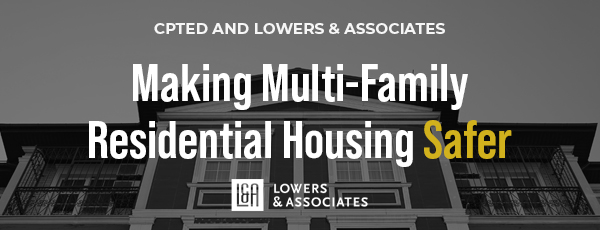Living in a safe and secure environment is a top priority for everyone, especially when it comes to multi-family residential housing. Property owners and management companies face a myriad of challenges in enhancing the safety of their residents while protecting themselves from potential liabilities. Fortunately, there’s a recent Florida bill, Bill 837, that provides a significant step towards addressing these concerns, offering protection to property owners and management companies through a presumption against liability. This protection is contingent on the implementation of specific security features, most of which fall under the umbrella of Crime Prevention Through Environmental Design (CPTED).
Understanding Florida Bill 837 and the Power of CPTED
Bill 837 brings much-needed relief to the multi-family housing industry. Under this bill, property owners and management companies can enjoy immunity from certain liabilities if they have incorporated CPTED measures that some of which are widely recognized as industry best practices. These security features include 1″ deadbolt locks, door viewers, window locks, gated pool areas, surveillance cameras/recording at access points, proper lighting, and more.
CPTED, a concept that emphasizes the importance of designing spaces to deter criminal activities, has proven to be a highly effective approach in reducing crimes and amplify the safety of residents. By implementing CPTED principles, multi-family housing property owners and management companies can build a sense of community among their residents and visitors, gain territorial control of areas, reduce crime, and minimize fear of crime.
The Key to Establishing Compliance
Compliance with Bill 837 is crucial for Florida property owners and management companies to obtain the presumption against liability. To demonstrate adherence to the bill’s requirements, owners/operators must undergo an on-site risk assessment conducted by a licensed auditor holding special CPTED certification from the State of Florida.
This is where L&A can be an invaluable resource for clients in the multi-family housing industry. Our team has the necessary certification and expertise to perform these types of assessments. Our commitment to excellence ensures that clients are provided appropriate solutions to reduce their risks with comprehensive evaluations and customized CPTED plans.
Beyond Physical Audits: A Holistic Approach
L&A’s role extends far beyond conducting physical audits. Our experts take a holistic approach, working closely with clients to create an optimal framework tailored to their unique needs. Understanding the importance of both present-day requirements and future scenarios, our assessments also encompass policy and procedure analysis and recommendations.
Additionally, L&A’s Open Source Intelligence team conducts a crime data analysis, providing clients with vital insights to make informed decisions on enhancing security. By considering the perspectives of various stakeholder groups such as residents, owners, management, and shareholders, we make certain that the proposed CPTED plans align with the priorities of the entire community.
Supporting Clients in Claims and Litigation Scenarios
In a world where uncertainty looms, having a partner like L&A is a game-changer for multi-family housing communities. Our experienced personnel possess an unparalleled understanding of how assessments and reports can be utilized in potential claims and litigation scenarios. By providing continued support and expertise, we safeguard our clients’ interests, mitigate risks, and help navigate complex legal situations.
Bill 837 and the implementation of CPTED principles offer hope for the multi-family housing industry in Florida. With the right expertise and guidance, property owners and management companies can proactively protect their communities, enhance safety measures, and establish the presumption against liability in a negligent security claim. By focusing on prevention, collaboration, and a holistic approach, we empower our clients to create secure, thriving residential spaces where residents can truly feel at home.
To get started with a risk assessment, visit: lowersrisk.com







